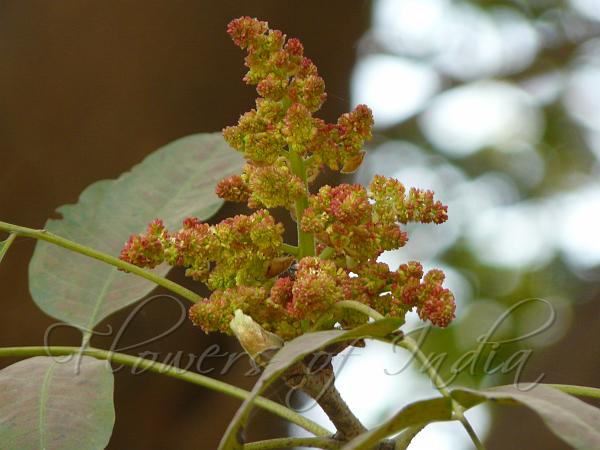|
| Kakkar |
|

|

| File size | 2277014 |
| Original date | 3/14/09 1:28 PM |
| Resolution | 2560 x 1920 |
| Flash | Flash did not fire, auto |
| Focal length | 81.6mm |
| Exposure time | 1/125s |
| Aperture | 4.2 |
| Focus Distance | |
| Metering Mode | Multi-segment |
| Camera make | Panasonic |
| Camera model | DMC-FZ18 |
| Sensor type | OneChipColorArea |
|
|
|
|
Photo: |
Botanical name: Pistacia chinensis ssp. Integerrima Family: Anacardiaceae (Cashew family)
Synonyms: Pistacia integerrima, Rhus integerrima
Synonyms: Pistacia integerrima, Rhus integerrima
Kakkar is glorious tree native to the lower Himalayan slopes, from
Afghanistan to Kumaon, cultivated for its attractive leaves, which are
bright red when young. The tree grows up to 17 m or more tall. Leaves are
compound with or without an end leaflet, 16-25 cm long. Leaflets are
opposite or nearly opposite, almost stalkless, 7-9 in number, 9-12 x
2.2-3.2 cm, lance-shaped, with tapering tips. They are smooth, pale green
on the under-surface. Male flower panicles are 0.8-1.2 cm long, drooping
at maturity. Female flower panicles are longer and erect. Flowers are
unisexual, and appear on separate trees. Sepals are 4, less than anthers
in length, linear. Stamens are 5, anthers 1.8 mm long, oblong, reddish.
Styles 3-parted to almost the base, stigmas recurved. Fruit is a drupe 5-6
mm broad, smooth, dry, greyish-brown in colour. Flowering: March-May.
Medicinal uses: Long, horn-shaped leaf galls that often develop on this tree are
harvested and used to make kakadshringi, an herbal medicine for diarrhea
in northern India.
Long, horn-shaped leaf galls that often develop on this tree are
harvested and used to make kakadshringi, an herbal medicine for diarrhea
in northern India.
Medicinal uses:
 Long, horn-shaped leaf galls that often develop on this tree are
harvested and used to make kakadshringi, an herbal medicine for diarrhea
in northern India.
Long, horn-shaped leaf galls that often develop on this tree are
harvested and used to make kakadshringi, an herbal medicine for diarrhea
in northern India.| Identification credit: Tabish | Photographed in Talkatora Garden, Delhi & J&K. |
• Is this flower misidentified? If yes,